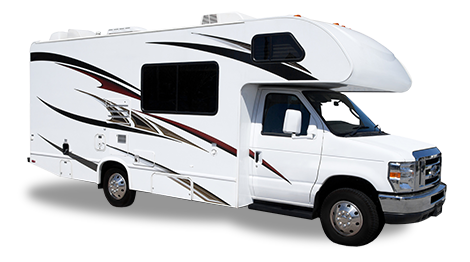How to Sell an RV in Arizona?
September 8, 2023 6:42 pm
If you’re looking to sell your RV in Arizona, there are a few important things to consider to ensure a successful sale. From preparing your RV for sale to negotiating with potential buyers, each step of the process requires careful attention to detail to ensure a fair deal and a smooth transaction. In this guide, we’ll take a closer look at the RV selling process in Arizona, providing valuable tips and insights to help you maximize your profits and find the right buyer for your RV.
Key Takeaways
- Preparing your RV for sale is essential for attracting potential buyers.
- Pricing your RV correctly can make a big difference in attracting buyers and maximizing profits.
- Advertising your RV on multiple platforms can help you reach a wider audience of potential buyers.
- Negotiating with potential buyers requires careful attention to communication and fairness.
- Completing all necessary paperwork is essential for a successful sale.
Understanding the RV Selling Process
When it comes to selling your RV in Arizona, it’s important to understand the process so you can make the most of your sale. Here is a step-by-step guide to help you navigate the selling process:
Step 1: Prepare your RV for Sale. This includes cleaning and organizing the interior, addressing any necessary repairs or maintenance, and taking attractive photos for online listings.
Step 2: Set the Right Price. Pricing your RV correctly is crucial to attracting potential buyers and maximizing your profits. Consider its condition, age, and market demand to set a fair price.
Step 3: Advertise and Promote Your RV. Getting the word out about your RV for sale is important. Utilize online platforms, social media, and traditional advertising methods to reach a wide audience of potential buyers.
Step 4: Negotiate and Close the Deal. Selling an RV often involves negotiations with potential buyers. Be prepared to negotiate effectively, ensuring a fair deal and successfully closing the sale.
Step 5: Complete the Paperwork. Selling an RV in Arizona requires certain paperwork and documentation. Ensure you complete all necessary paperwork, including transfer of ownership, bill of sale, and any other relevant documents.
Step 6: Finalize the Sale. In the final step, finalize payment, hand over the keys, and ensure a smooth transaction. Congrats, you’ve successfully sold your RV!
Preparing Your RV for Sale
When selling your RV privately in Arizona or online, it’s important to make a good first impression with potential buyers. This means taking the time to prepare your RV for sale and present it in the best possible condition. Here are some important steps to take:
Clean and Organize: Start by thoroughly cleaning your RV, both inside and out. Remove all personal belongings and clutter to create a spacious and inviting atmosphere. Consider hiring a professional cleaning service to ensure that your RV is spotless.
Address Repairs and Maintenance: Fix any issues with your RV before putting it up for sale. This includes fixing leaks, replacing worn-out parts, and ensuring that all appliances are in good working order.
Take Attractive Photos: When creating your online listing, take high-quality photos that showcase your RV’s best features. Take pictures of the interior and exterior from a variety of angles and in different lighting conditions. This will help potential buyers get a better sense of what your RV looks like and what it has to offer.
By taking these steps to prepare your RV for sale, you can increase your chances of finding the right buyer and getting the best possible price for your RV.
Setting the Right Price
One of the most important factors in selling an RV is setting the right price. If you price your RV too high, you may turn away potential buyers, while pricing it too low could mean missing out on potential profits. Here are some tips for setting the right price:
1. Research the market: Look at similar RVs for sale in your area and compare their prices. This will give you an idea of what price range is reasonable for your RV.
2. Consider the condition of your RV: If your RV is in excellent condition with low miles and minimal wear and tear, you can price it higher than an RV that needs repairs or has high mileage.
3. Be flexible: It’s important to be open to negotiation with potential buyers. You may need to adjust your price to accommodate their budget or offer additional incentives such as including accessories or offering a warranty.
4. Be realistic: While you want to maximize your profits, it’s important to be realistic about the value of your RV. Overpricing your RV may lead to it sitting on the market for too long, resulting in a lower final sale price.
By following these tips, you can set the right price for your RV and attract potential buyers who are willing to pay for its value.
Advertising and Promoting Your RV
Now that your RV is in tip-top shape and priced correctly, it’s time to start spreading the word to potential buyers. There are various methods for advertising and promoting your RV, and here are some tips:
1. Online Listings: Consider listing your RV on popular online platforms such as Craigslist, RV Trader, or Facebook Marketplace. Make sure to include clear photos and an honest description of your RV’s features and condition.
2. Social Media: Share your RV listing on your personal social media pages or RV enthusiast groups to reach a wider audience. You never know who might be interested in buying an RV.
3. RV Dealerships:
If you’re not comfortable selling your RV on your own, consider taking it to a dealership. Some dealerships will buy your RV outright, while others may offer consignment options. Just be aware that you may not make as much money as you would selling it privately.
4. Word of Mouth: Don’t underestimate the power of word of mouth. Let your friends, family, and coworkers know that you’re selling your RV. They may know someone who’s interested in buying an RV or may be interested themselves.
5. Traditional Advertising: Depending on your budget, you may also consider traditional advertising methods such as newspaper ads or flyers in RV parks or campgrounds.
Remember to be patient and persistent in your advertising efforts. Depending on the demand for RVs in your area, it may take some time to find the right buyer. But with the right advertising methods, you’ll increase your chances of finding a buyer who will appreciate your RV as much as you do.
Negotiating and Closing the Deal
As you begin to receive offers on your RV, it’s important to remember that negotiations are a normal part of the selling process. Be prepared for potential buyers to make an initial offer that is lower than your asking price.
When negotiating with potential buyers, it’s important to remain patient and open-minded. Consider the buyer’s offer carefully and be willing to negotiate to reach a fair deal for both parties.
One effective strategy is to suggest meeting in the middle of your price and the buyer’s offer. Remember that the goal is to sell your RV while still getting the best possible price for it.
Once you have agreed on a price, it’s important to have a written agreement in place. This can include a bill of sale, which outlines the terms of the sale and protects both parties in case of any future disputes.
Before finalizing the deal, be sure to thoroughly inspect the RV with the buyer one last time. This ensures that both parties are aware of any issues or concerns and can avoid any misunderstandings.
Once all parties are satisfied, it’s time to finalize the sale. This includes completing any necessary paperwork, transferring ownership, and exchanging payment. Be sure to keep copies of all documents and receipts for your records.
With patience and a bit of negotiation, you can successfully close the deal and sell your RV for a fair price.
Completing the Paperwork
Now that you have found a buyer for your RV, it’s time to complete the necessary paperwork. The process may seem overwhelming, but it’s important to make sure everything is filled out correctly to avoid any future legal issues.
The first document you will need to complete is the transfer of ownership. This document transfers the ownership of the RV to the buyer and must be signed and notarized by both parties.
Next, you’ll need to create a bill of sale. This document outlines the details of the transaction, including the purchase price, payment terms, and any warranties or guarantees offered. It’s important to include as much information as possible to protect yourself and the buyer.
Depending on your state and the specifics of the sale, you may also need to provide additional documents such as emissions test results or lien release forms.
Once all the necessary paperwork is completed and signed by both parties, you’ll need to submit it to your state’s Department of Motor Vehicles (DMV). This step finalizes the transfer of ownership and ensures that the buyer becomes the legal owner of the RV.
Completing the paperwork can be a tedious process, but it’s a crucial step in selling your RV. Make sure to double-check everything before submitting it to the DMV, and don’t hesitate to ask for help from a legal professional or DMV representative if needed.
Finalizing the Sale
Once you have negotiated a fair price and agreed on the terms of the sale, it’s time to finalize the transaction. Here are the steps you need to take to ensure a smooth and successful sale:
1. Collect payment: Make sure you receive full payment for your RV before signing over the title and handing over the keys. You can accept payment in the form of cash, cashier’s check, or bank transfer, depending on what you and the buyer agree upon.
2. Sign over the title: In the state of Arizona, the seller must sign over the title to the buyer, indicating that the ownership of the RV has been transferred. Make sure to fill out all required fields on the title and sign it in the presence of a notary public.
3. Provide a bill of sale: In addition to the title, you should also provide a bill of sale to the buyer, which outlines the terms of the sale, including the purchase price, date of sale, and any warranties or guarantees. This document can serve as proof of purchase and protect both you and the buyer in case of any disputes.
4. Hand over the keys: Once you have received payment and completed all necessary paperwork, it’s time to hand over the keys and any other relevant items, such as manuals or service records. Make sure to double-check that you have removed all personal belongings from the RV before doing so.
5. Follow up: Finally, it’s a good idea to follow up with the buyer after the sale to ensure that they are satisfied with the RV and that there are no issues that need to be addressed. This can help build a positive relationship with the buyer and may even lead to future sales or referrals.
To sell your RV with professionals, contact Sell My RV Today at 888-227-4078
Categorized in: RV Info





Comments are closed here.